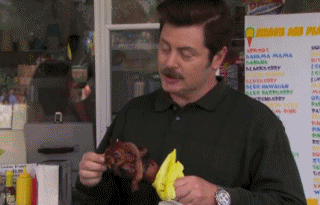“The confidence of an era can be assessed by the width of the gap between scientific and moral reasoning. In periods of confusion and uncertainty, the turn to aesthetics (of whatever form) becomes more pronounced.”
– David Harvey, The Condition of Postmodernity (1989)
Allow me to riff a bit on Harvey’s observation. To elaborate: in times of dislocation, the space between our scientific and moral judgments is rent wide. As this gulf expands, confidence tumbles into the abyss, and people grab onto aesthetics. The archetypical example of this social phenomenon is 20th-century fascism, specifically Nazism. Breakneck industrialism, coupled with macroeconomic upheaval, produced a sort of crisis of consciousness in Germany. “From a metaphysical point of view, Russia and America are the same; the same dreary technological frenzy, the same unrestricted organization of the average man,” lectured Heidegger in 1939, wearily surveying the spread of modernity encircling his homeland. All this technical turmoil sped German society away from more rigid moral sensibilities; Weimar republicanism crumbled; and in the vacuum arose a maniacal and potent politics of aesthetics. When tumultuous scientific advances left moral awareness dumbfounded, the Nazis persuasively countered with the visual and the visceral, offering Triumph of the Will and anti-Semitism.
Jumping ahead to a far less sinister example: I think Harvey’s observation holds for the food culture of today, namely as it relates to the consumption and production of animal products. (And I am not just saying that because Hitler was an aspiring vegetarian.) The practical methods of food production have outrun consumer norms, at least among the chattering classes. Inhumanely but hyper-efficiently manufactured animal products are everywhere around us, while our moral sentiments balk at the cruelty. Our confidence is shaken. Grasping for some moral antidote, all that our consciences find in the face of this ubiquitous, highly technological system of food production are wanting philosophical answers, most prominently the cold utilitarian ethics of Peter Singer.
Arising from the social chasm left by this decoupling, aesthetics reigns. Indeed, even the HPR—an internationally read bastion of impartial top-notch analysis—published an issue on food politics with a slick cover and layout. Further evincing this trend are writers like Jonathan Safran Foer, as well as anti-GMO foodies, like Michael Pollan and the New York Times’ Mark Bittman, who tout stylish gospels to get us through this moral-scientific quandary. These three authors, all New York Times best-sellers, have published manifestos typically characterized by snazzy, stylish, sleek book covers, umpteen extremely well written anecdotes, and idyllic appeals to some vague idea of “natural” or “organic” agricultural products (as if the advent of human agriculture was somehow “natural”). Yet, in the face of the monstrous modern juggernaut known as the food industry, they mostly stop short of the truly hardheaded, rational response: I am speaking, of course, of relatively total abstention from the bloody system—that is, veganism. Instead, we get the sentimental vegetarianism of Foer, the VB6 foodie-accomodationism of Bittman, and the long-form omnivorism of Pollan. On the part of “conscious” consumers, there will be no moral, chiliastic struggle against the mechanistic march of factory farming—only a comfy identification with the trendy but half-hearted aesthetic of cutting-edge social awareness.
As with many a trend, there are legions of posers. I am sure many of you have run into the omnivore claiming, “I’m a vegetarian; I only eat chicken!” Well then call me a teetotaler who only drinks beer. Why can’t they simply be someone who eats fewer animal products? Why must they try to conform to the newest scene? There are also patrons of knock-off brands. I am thinking of those cage-free egg advocates, who seem to care more about how holy some puny stamp on a package makes them feel than the actual conditions of chickens.
Now, on the other side we have the stupid machismo (is that redundant?) and knee-jerk defensiveness of those who want to justify their meat consumption. The latter interestingly marks a form of moral conservatism, revealed only relationally to the hurtling progress of food production technology; the former is largely self-ironic, since no urbanite today actually kills their own dinner, yet it is increasingly pervasive. But Ron Swanson, this macho-meat myth personified, is no real argument for the rightness of factory-farmed flesh. Or is he? What makes his ‘stache-and-steak aesthetic any better or worse than merely fashionable foodism?
It seems to me that we lack a well thought out way of reckoning with the total systemization of brutal food production alongside our deeper moral sensibilities. Turning away from the abyss opened up by the divergence of moral and science understanding, we have evidently found some refuge in the aesthetics of current food culture. This would appear superficial at best. But, hey, first-world problems, right?
